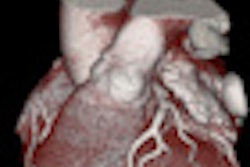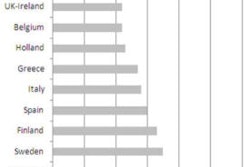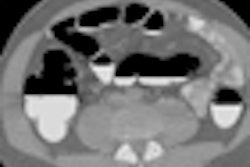CHICAGO - Computer-aided detection (CAD) software can improve the diagnosis of stenosis on coronary CT angiography (CCTA), although the level of performance gain varies by level of reader experience, according to research presented Sunday at the 2010 RSNA meeting in Chicago.
A multi-institutional team from the University of Munich in Germany and the Medical University of South Carolina (MUSC) in Charleston found that inexperienced readers were aided the most by CAD, while experienced readers gained only a modest benefit.
"Using [CAD] as a second reader, the interpreter, especially inexperienced readers, may find reassuring verification of their exclusion of significant stenosis based on a normal or near-normal [CCTA] study," said presenter Elisabeth Arnoldi, MD, from the University of Munich.
CCTA offers high accuracy for detecting coronary artery stenosis compared to coronary catheterization studies, Arnoldi said. In clinical practice, the most important benefit of CCTA is its high negative predictive value, i.e., reliable exclusion of significant stenosis with CCTA.
However, considerable experience is required to provide correct interpretation of these studies, Arnoldi said.
Following up on initial research that showed a relatively high accuracy from CAD compared with quantitative catheter angiography (QCA), the research team sought to evaluate the effect of CAD on the performance of readers with different experience levels for diagnosing stenosis.
The team evaluated 50 consecutive patients with suspected coronary artery disease referred for coronary catheterization because of chest pain. In all patients, CCTA was performed prior to coronary catheterization, Arnoldi said.
Of the 50 patients, 25 were studied on a 64-slice Somatom Sensation scanner (Siemens Healthcare, Malvern, PA), while 25 were evaluated on a dual-source Somatom Definition scanner (Siemens). The exams were performed using standard acquisition and reconstruction parameters and a contrast media injection protocol.
The CT datasets were then evaluated on a clinical workstation (TeraRecon, Foster City, CA) for significant (≥ 50%) coronary stenosis by five interpreters with different experience levels, including one second-year radiology resident and one cardiology fellow with limited experience, one radiology fellow with intermediate experience, and two experts (one radiologist and one cardiologist) with six and 10 years of experience, respectively.
After initial review, the studies were re-evaluated three months later with the use of Cor Analyzer software (Rcadia Medical Imaging, Auburndale, MA). For the purposes of the study, QCA served as the reference standard and found 29 stenoses ≥ 50%.
On a standalone basis, CAD yielded sensitivity of 67% on a per-vessel basis and 100% on a per-patient basis.
The two inexperienced readers showed the best improvement from the use of CAD.
|
CAD helped reduce the number of false-negative patients from an average of two to zero, but it did not affect false-negative patients for the more experienced readers.
The researchers acknowledged a number of limitations of their study, including the selection bias of utilizing a cohort with a high likelihood of coronary artery disease. They also used a strict reference standard of ≥ 50% stenosis, Arnoldi said.
"Computer-aided detection systems ... appear to be more suitable for aiding the exclusion of significant coronary artery stenosis in patient populations with low likelihood and prevalence of disease, rather than establishing a diagnosis of significant stenosis in populations with high likelihood and prevalence of obstructive lesions," Arnoldi noted.
By Erik L. Ridley
AuntMinnie.com staff writer
November 28, 2010
Related Reading
CONFIRM registry fills in CCTA evidence gaps, November 15, 2010
Supersized CONFIRM trial tackles coronary CTA and mortality, July 30, 2010
Cardiac model favors treadmill then CTA for low-risk patients, June 7, 2010
Cardiac CAD safely rules out coronary artery disease, June 1, 2010
Zero calcium score enough to send chest pain patients home, February 10, 2010
Copyright © 2010 AuntMinnie.com



















